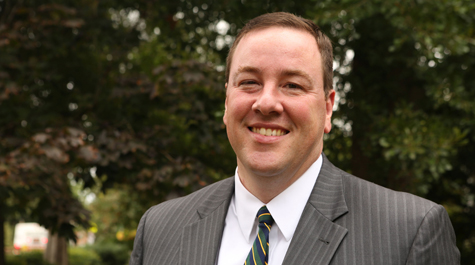Interim AD outlines financial issues, vows to listen
Publicly addressing the William & Mary community for the first time since being named interim athletics director, Jeremy Martin outlined how a financial crisis led to the decision announced Sept. 3 to discontinue seven varsity sports. He also vowed to meet with those affected and listen to any ideas they might have.
“We need to be clear with one another: The challenges we face are real,” Martin said Thursday night. “Difficult decisions are required at this time. Our goal is to engage in meaningful dialogue and to bring an entrepreneurial mindset to problem solving required.
“To those who are ready to bring substantive solutions that we may not have thought about, in a way that is respectful of the challenges we have to solve, we are very open to that. We’re eager for that.”
{{youtube:medium|jJb5RBepNX0}}
Despite the pandemic, Martin stressed, the budgetary issues have been ongoing at William & Mary. He referred to the PICTOR Report from 2018, which concluded that fielding 23 varsity sports and its financial model “are not sustainable within its current or foreseeable resources.”
William & Mary has the smallest enrollment of undergraduate students among full-time Colonial Athletic Association members but the second-highest number of student-athletes. W&M spends $45,791 per athlete, the third-lowest amount in the conference.
In fiscal year 2020, Tribe Club Giving was less than half of the projected $5.43 million. Also, NCAA revenue was down $500,000. The result is a $2.87 million shortfall in FY20.
Martin said potential solutions for the budgetary issues included reducing travel, personnel decisions, debt restructuring, and fundraising initiatives — “all of which we’ve done.” Another potential solution was to temporarily suspend sports, though the long-term financial benefits were limited.
“And you could potentially make the hardest decision of all, which is to discontinue sports on a permanent basis,” he said. “If you make that choice, it yields more savings because you can limit the impact to a fewer number of sports. But it is a permanent impact.”
Martin framed the decision in three parts: W&M’s sustained identity at the Division I level, stabilizing the budget, and Title IX compliance.
“It’s a comprehensive solution,” he said. “When you take those three frames, I understand the most common thing we hear is ‘I want to talk about this one piece of the solution and focus on it.’ It has to be a comprehensive solution for the entire department.
“There are options that we can consider together. But any solution that we bring forward as a viable scenario has to ensure that it meets those three frames. If an affected sport would like to be reinstated, it has to be able to do so in Title IX compliance with providing ongoing budget stability — not in the near term, (but) ongoing long-term budget stability. And it has to do so within a Division I identity.”
As for the seven sports that were cut — men’s and women’s swimming, men’s and women’s gymnastics, men’s indoor and outdoor track, and volleyball — Martin said he has begun meeting with their student-athletes and coaches.
“Next week, we’re engaging the Tribe Club and faculty representatives to review financial data that we’ll share with the broader W&M community the following week,” he said. “In addition throughout this time, these next two weeks, I’ll continue meeting with members of the William & Mary Foundation, the Tribe Club and representatives from individual sports.
“My commitment to our student-athletes has been that I will walk with them throughout this year, even as we do not entirely know what the outcome will be,” he said. “I will be at practices and hopefully games and meets, if we are able, this spring.
“We will engage this problem head on. We will face it with curiosity. We will pursue creative solutions. And we will answer the call to pursue excellence with integrity.”














